Chord Alto Review & Measurements - My favourite 'warm' headphone amp
Chord Electronics Alto Headphone Amplifier
Introduction
Whilst in the headphone space Chord Electronics are primarily known for their DACs and DAC/Amp combo units, in the speaker world, much of their history and expertise is in the realm of analog amplifiers and preamplifiers. In fact you can get a peek behind the scenes at Chord by watching our factory tour video here:
And now, they’ve brought some of that tech to the headphone space with the Alto, a discrete, dedicated headphone amplifier which includes some rather unique features, and packs quite a bit of power into a very small form factor.
Design
The Alto’s overall aesthetic is quite distinctly Chord, with the signature glowing glass marbles and color-coded settings, it wouldn’t look entirely out of place onboard the USS Orville!
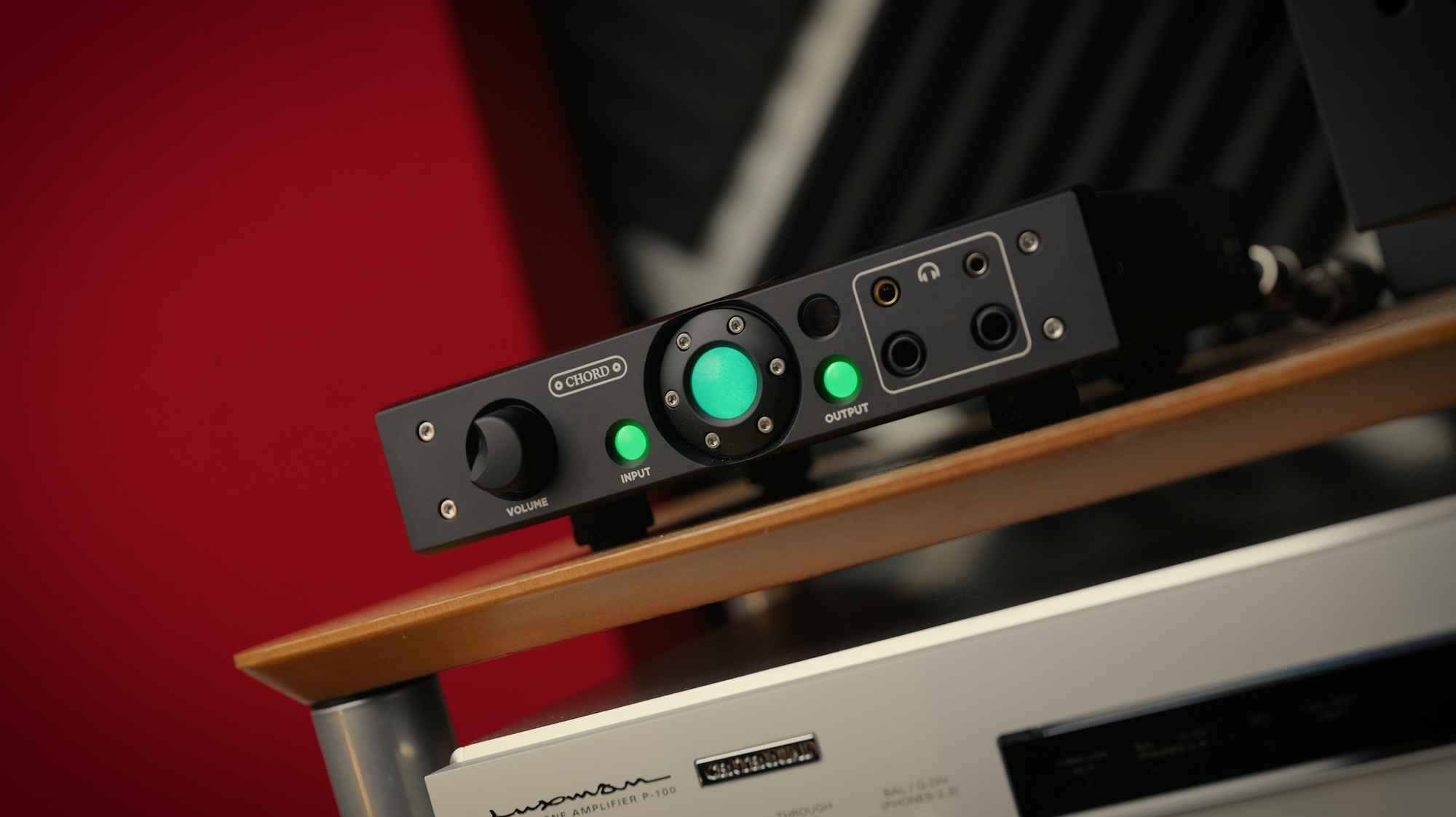
The unit offers four headphone output options, including two quarter inch jacks, one 3.5mm jack, and one 4.4mm pentaconn output although the amplifier itself is single ended so this is mostly there for compatibility.
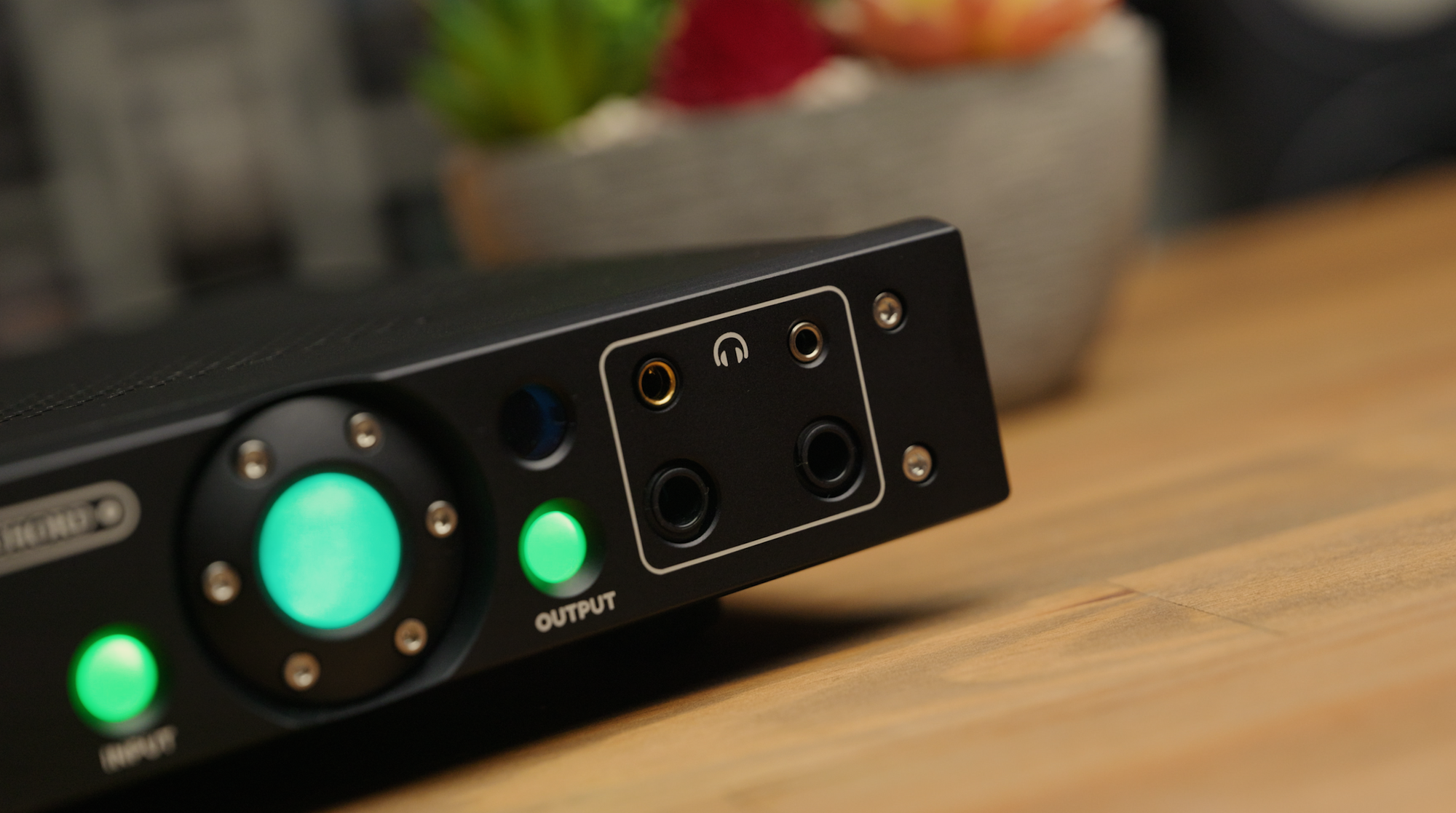
But this is not ONLY a headphone amp, it can also pump out up to 50W into 4 Ohms or 25W into 8 Ohms via the speaker outputs on the rear. Or if you are using active monitors, there are XLR line outputs that can also be set to run standalone, muted, or simultaneous output with the front headphone outputs depending on your needs.
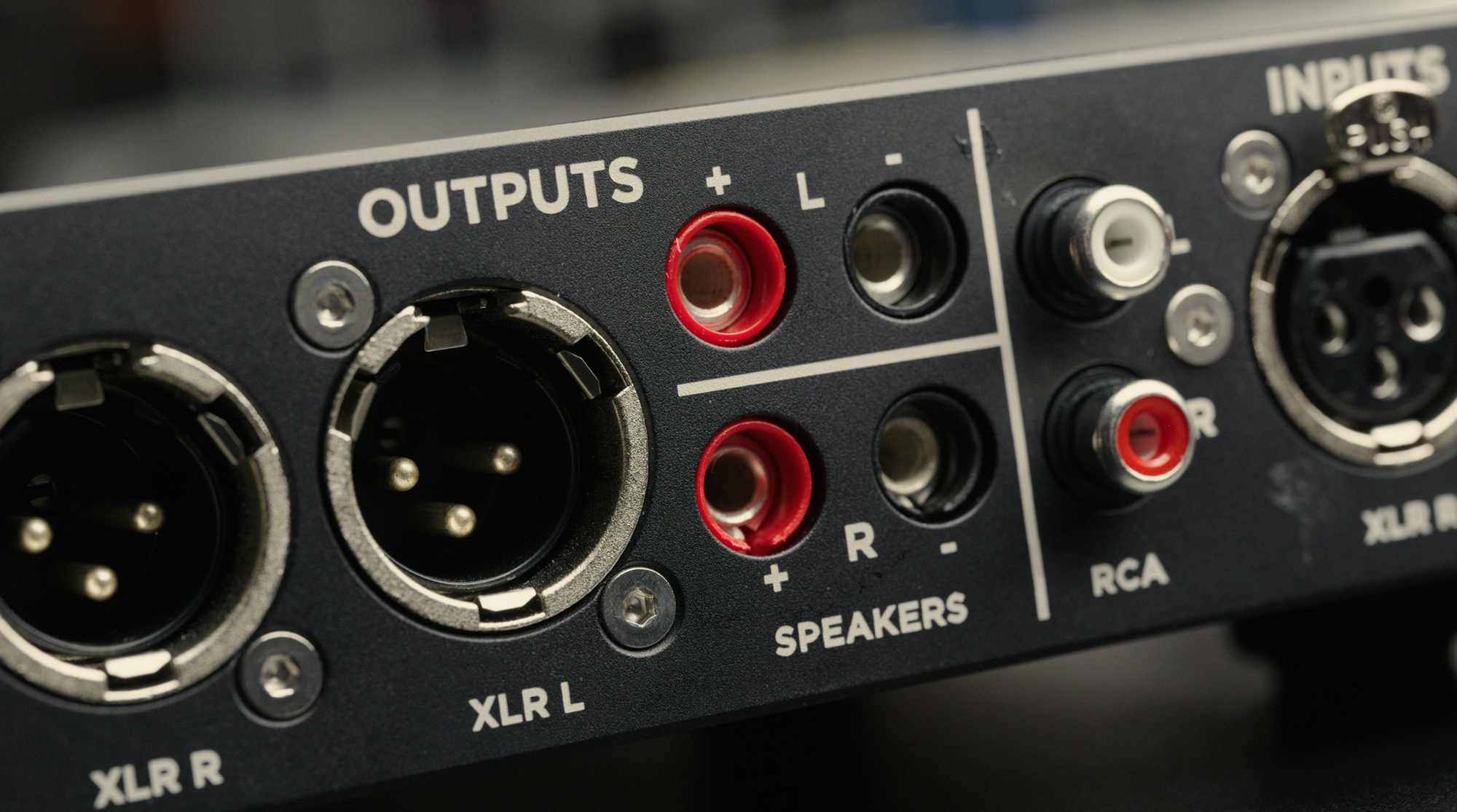
The Alto also includes a motorised volume potentiometer, which combined with the I/O makes it quite ideal as an analog ‘hub’ for your system. Apt given as this product is primarily marketed towards the professional audio market. There is also a feature I’ve not seen on just about anything else, which is a 12V DC output on the rear, allowing you to directly power any DAC, interface, monitoring display or other product which accepts a 12V DC input, neat!
Sound
Power:
The Alto may be compact, but this small form factor packs quite a punch, delivering over 7W into 32 Ohm loads, and as shown down in the measurement section, doing so without almost any rising distortion towards the upper end of its output capability, something that many other amplifiers even if their max power is significant, can struggle with. And to my ear this helps the Alto to not only be able to properly power any headphone I ran on it, but to sound controlled, forceful and authoritative even with extremely demanding headphones and demanding, bassy tracks.
Performance:
The Alto’s inherent sound is slightly on the warm side of things, but what makes it unique and why I’ve enjoyed my time with it so much, is that unlike many other warm leaning amps, it still retains almost exactly the same level of transient incisiveness and tight, well controlled low-end that I’d usually expect to have to stick with a more neutral amp such as a Ferrum OOR in order to retain. Most other amplifiers that lean warmer such as the Enleum AMP-23R as part of this flavour also get a little softer and more laid back sounding. Whereas the Alto is warmer, but just as quick and snappy as some of my favourite, more neutral sounding amps. This ability to sweeten up vocals, strings and other upper midrange and treble content without at all needing to dampen the speed of a snare hit or tactility of a kick drum is something few other amplifiers I’ve come across have done all that well, and the ones that have were typically tube amplifiers such as the Woo WA33.
The WA33 I did adore, but it is at the end of the day a tube amp, and that comes with some caveats, namely in that tubes rightly have a bit of a reputation for delivering a ‘holographic’ effect to soundstage. This is an effect which I do enjoy quite a bit, but don’t consider to be ‘accurate’ and would not want this sort of sound from the amp I’d be daily driving. Historically this left three options: you could opt for a warmer solid state amp like a Burson Soloist or Enleum AMP-23R but sacrifice some top end detail and bass definition in the process, you could get a great tube amp and accept the difference of spatial/soundstage presentation they offer, or you could spend significantly more money for something such as the Zahl HM1 which in its zero-feedback mode does offer some extra warmth compared to neutral whilst still retaining flagship level technical performance. But with the Alto, this “warm but open” sound is available at a reasonably accessible price. Also able to power any headphone I threw at it besides occasionally hitting some limits when pushing the Modhouse Tungsten hard (as is the case with 99% of amps, that headphone is a tough one!), and doing so in a more than desk friendly form factor. And I’ve greatly enjoyed my time with it. For more detailed impressions make sure to check out the full video review!
Measurements
Measurements Include:
- THD+N (SINAD)
- Bandwidth
- THD+N vs Frequency
- Power
- Output Impedance
- CMRR (Common Mode Rejection Ratio)
- Power On/Off Behaviour (Safety Test)
- Volume Matching vs Level of Attenuation
- Noise (20hz-20khz, 20hz-96khz and 20hz-1Mhz)
- Intermodulation Distortion (IMD)
- Dynamic Intermodulation Distortion (DIM)
- Crosstalk
- Multitone
- Square Wave Output
Additional measurements and test information available in the full report
Tests conducted with standard 4V line level XLR input, and tested at 4V output, 700mV (Headphone Level) output, and 50mV (IEM Level) Output.
Test Setup
- Audio Precision APx555 B-Series analyzer
- Measurement setup and device under test are running on regulated 230V power from a Furman SPR-16-Ei
- Alto was warmed up for 4 hours prior to testing
- 4.4mm output used unless otherwise specified
- Exact analyzer/filter configurations for each measurement are detailed in the full reports
- CH1 (Blue) = Left, CH2 (Red) = Right
Full Measurement Reports
Results
Gain: 12dB
SNR: 106dB
IMD SMPTE: -75dB
DC Offset: 36mV (Active), 37mV (Idle)
Output Impedance: 0.1 Ohm
THD+N / SINAD
1khz Sine, 4V input, 4V output (300Ω Load):
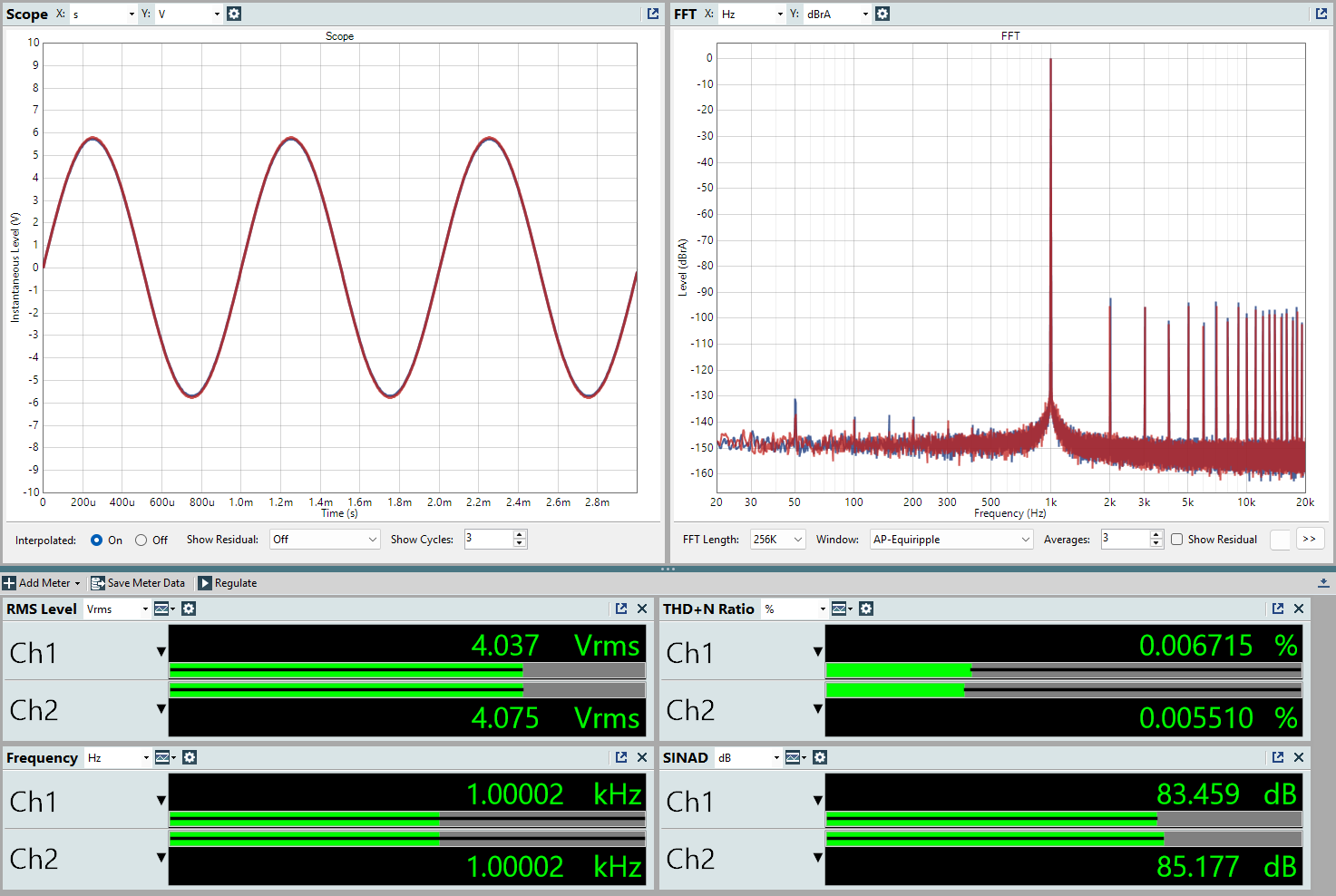
About -85dB THD+N. Definitely not as low as other options, though I think this level and in particular the profile of harmonic distortion (harmonics extending quite far, and remaining roughly equal in level), is the main reason why this amplifier has a warmer sound than options like a Ferrum OOR or Holo Bliss.
1khz Sine, 4V input, 4V output (32Ω Load):
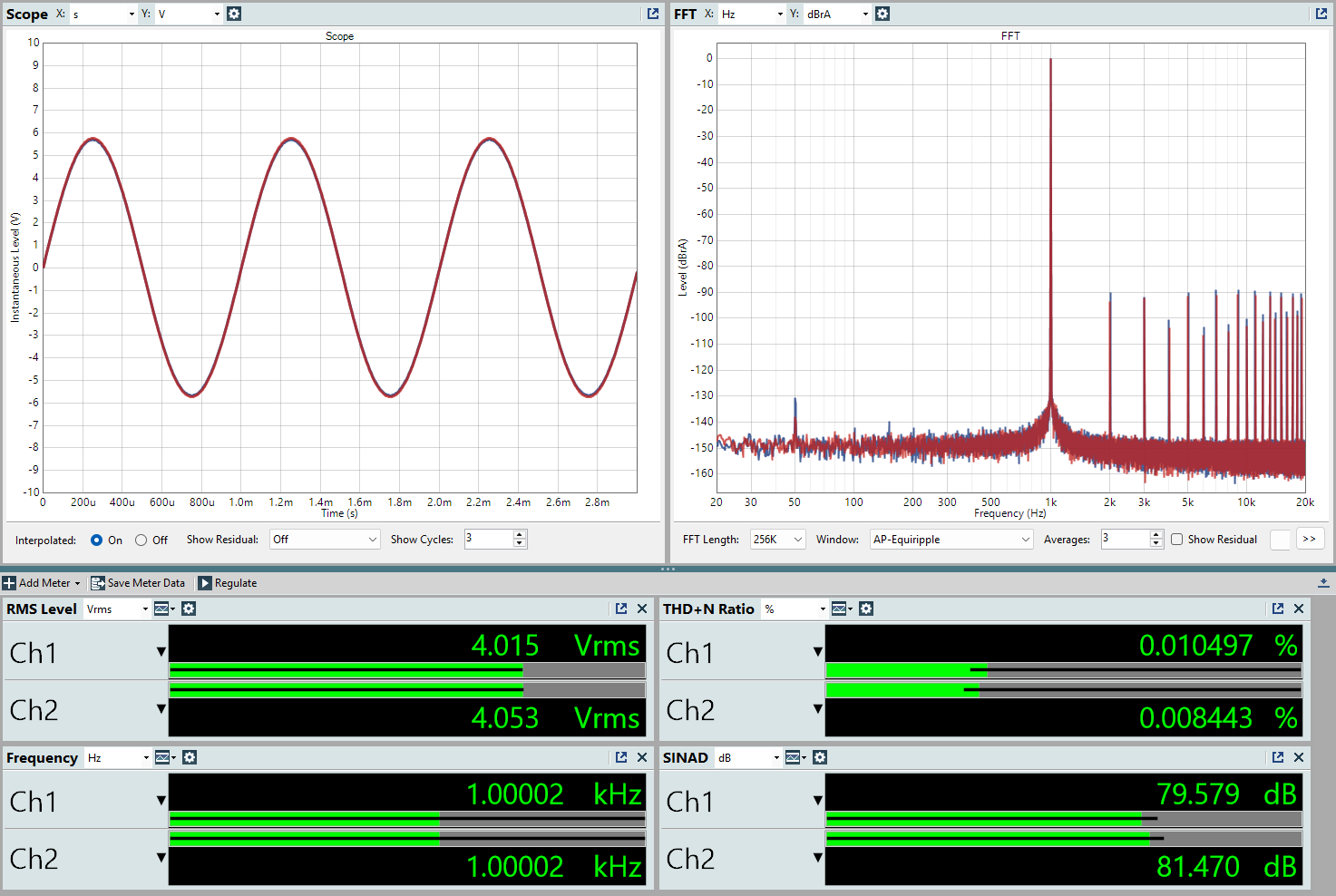
About -80dB THD+N when the load is swapped to 32 Ohm.
1khz Sine, 4V input, 700mV output (Headphone Level, 32Ω Load):
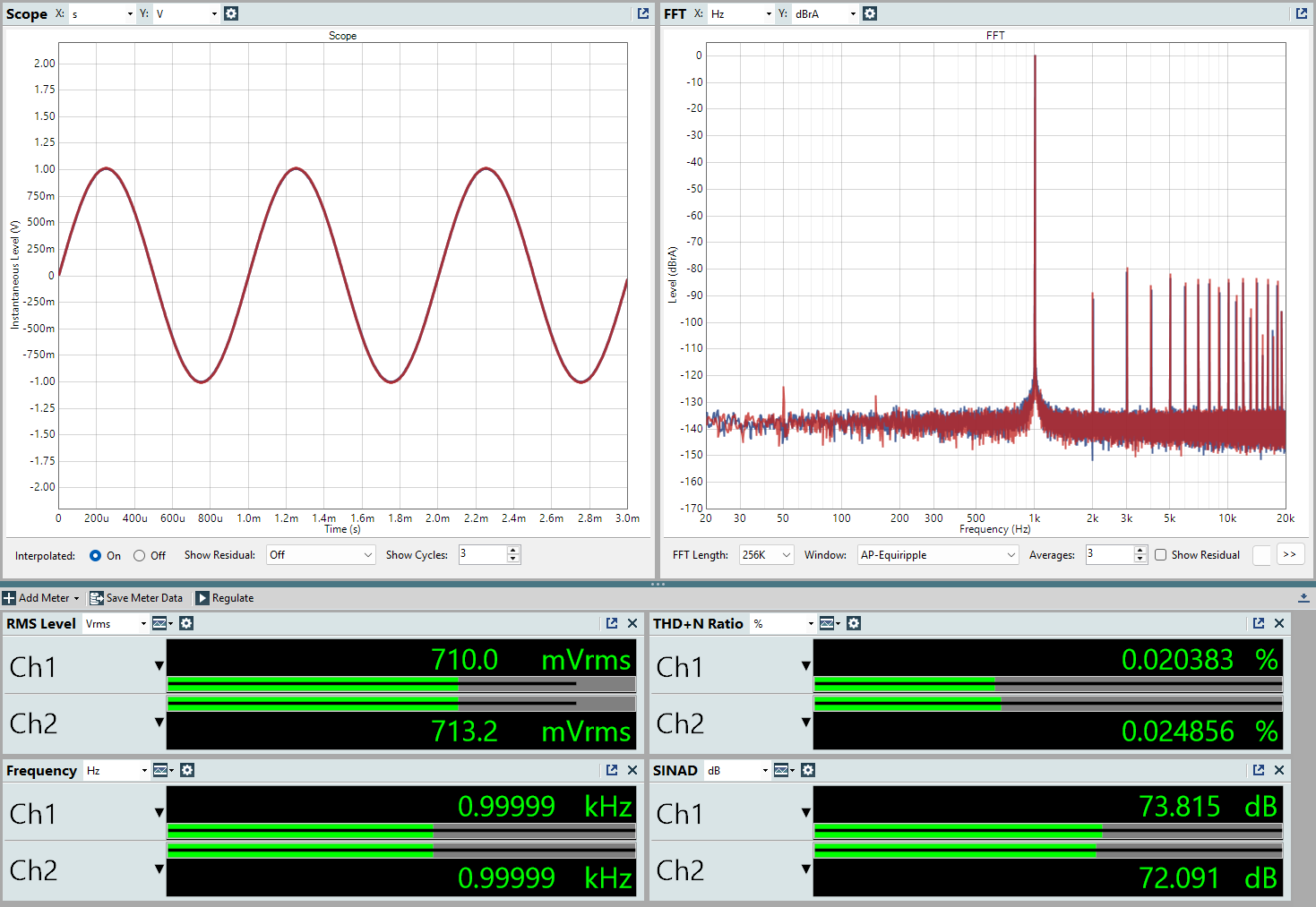
1khz Sine, 4V input, 50mV output (IEM Level, 12Ω Load):
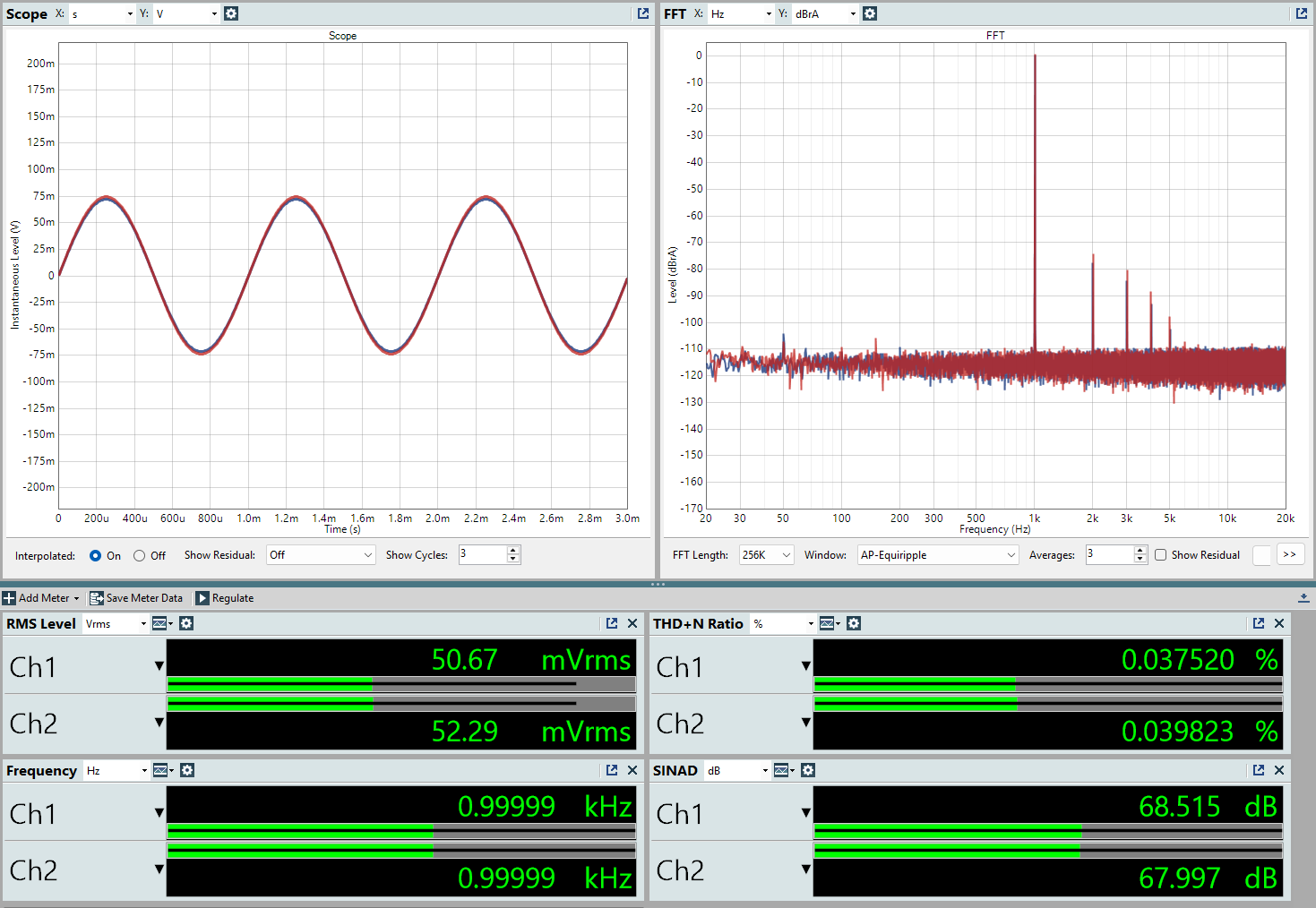 With IEMs the Alto is definitely serviceable, but it may not be the best choice if you primarily use sensitive IEMs.
With IEMs the Alto is definitely serviceable, but it may not be the best choice if you primarily use sensitive IEMs.
Bandwidth
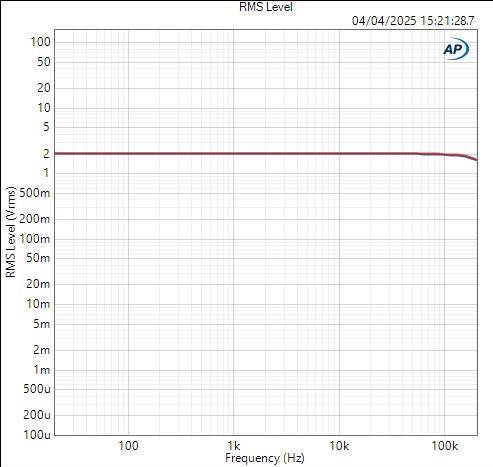
The Alto has a very wide bandwidth/high-slew-rate, extending flat up towards 200khz.
THD+N vs Frequency (96khz capture bandwidth)
(96khz bandwidth used on the analyzer. Don’t compare this directly to standalone audible band THD+N measurements as the measurement setup is not the same.)
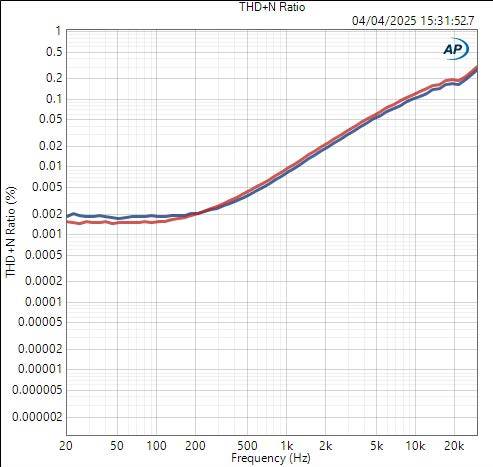
THD vs frequency shows that bass content is significantly lower in distortion than higher frequency content. This works to the Alto’s advantage given its harmonic distortion profile. For an amp with just 2nd order only harmonics it wouldn’t matter too much if THD was high and flat vs frequency since higher amplitude bass content at 50hz is only going to be adding harmonics to the bass region itself. (The 2nd harmonic of 50hz is 100hz.) But for the Alto, where it has harmonics extending quite far, the 15th harmonic for example of 50hz is 750hz, and therefore if the Alto was flatter here or higher in THD in the bass region, harmonics from high amplitude bass content could audibly interfere with midrange content. Therefore the fact that bass content plays very cleanly means higher frequency elements are not disturbed or masked by it, and then the extra harmonics added to higher frequency content allows the Alto to ‘sweeten things up’ a bit subjectively.
Power

THD vs Output Level in Watts
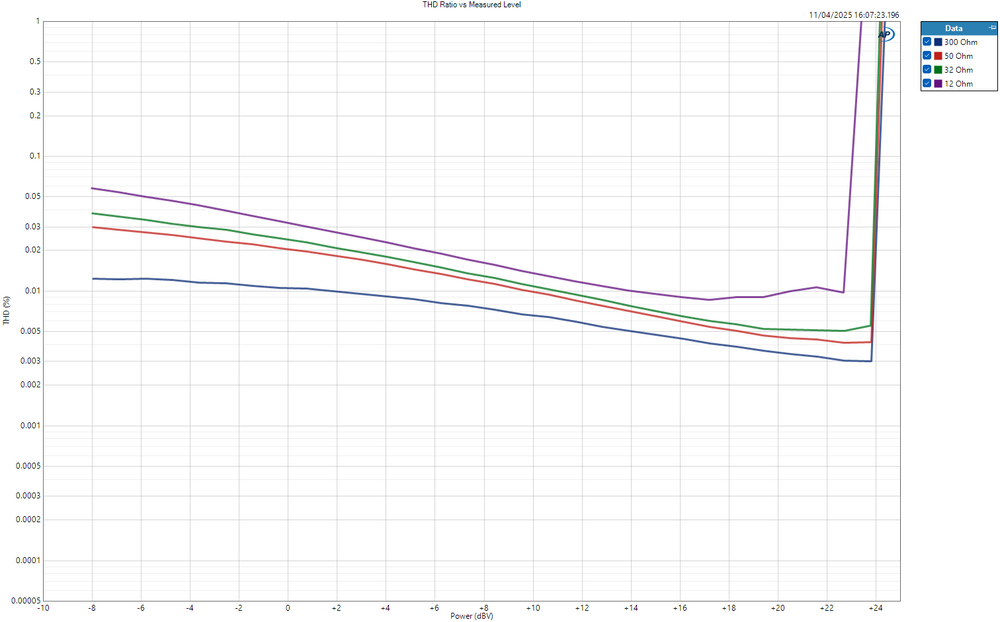
THD vs Output Level in dBv, 0dBv=1V
The Alto is quite a powerful amplifier, and as well as being able to deliver over 7W into a 32 Ohm load, it doesn’t seem to show any rising distortion as output level increases, which means the sound you get from this amplifier will be quite consistent regardless of volume or how demanding the track gets. There is some amount of flat increase in THD as the load impedance goes down however, so you may get slightly different results running much lower impedance headphones on this vs higher impedance ones.
Power On/Off Behaviour
This test shows the output of the device when turned on/off, to check whether the output may put connected headphones at risk. Regardless of what this test may show, please ALWAYS disconnect your headphones when turning any amplifier on/off unless the manufacturer explicitly instructs you to do otherwise.
Turning on (from cold, 300Ω load):
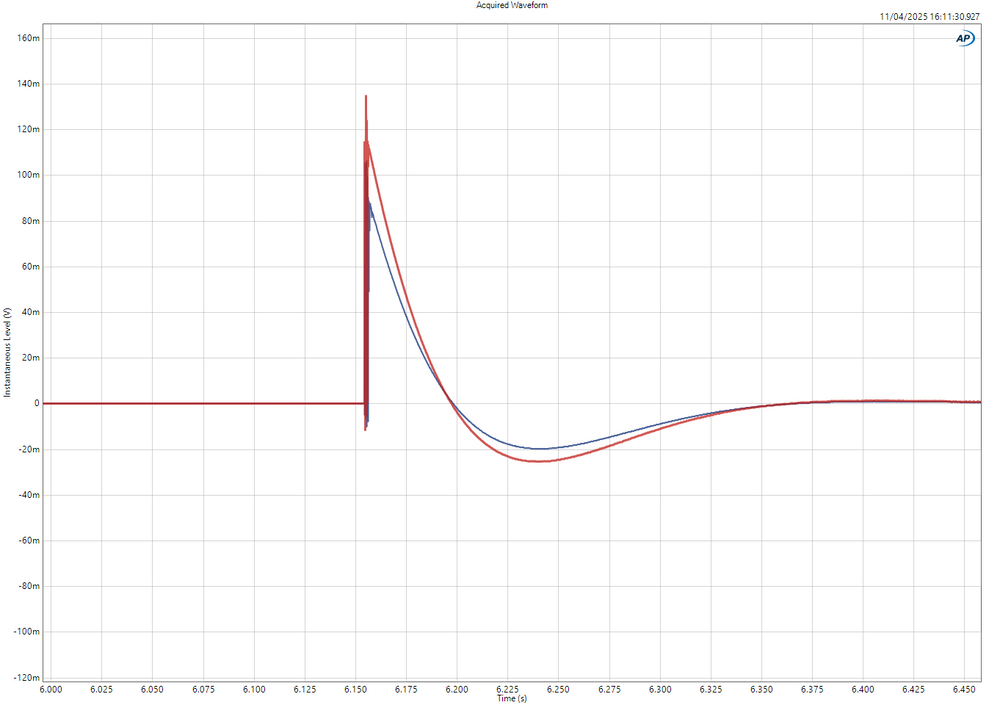
Turning off (from warm, 300Ω load):
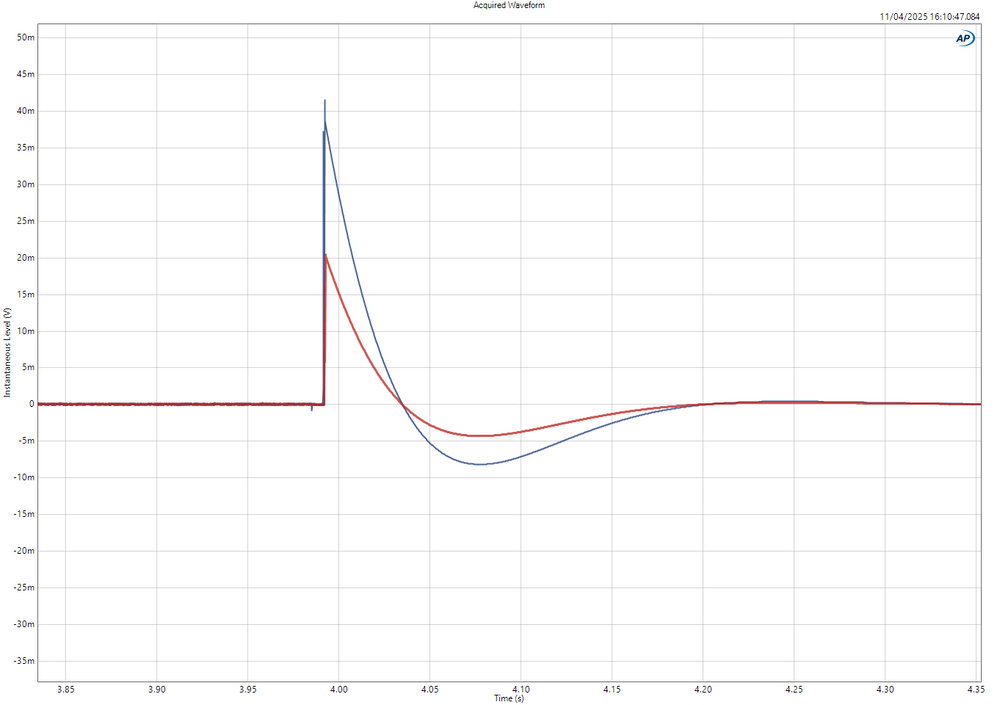
There is a moderate spike of up to about 120mV when turning the amplifier on/off. This is not close to enough to damage anything, but if using more sensitive headphones you may wish to have them disconnected or at least off your head when power cycling the unit.
Noise
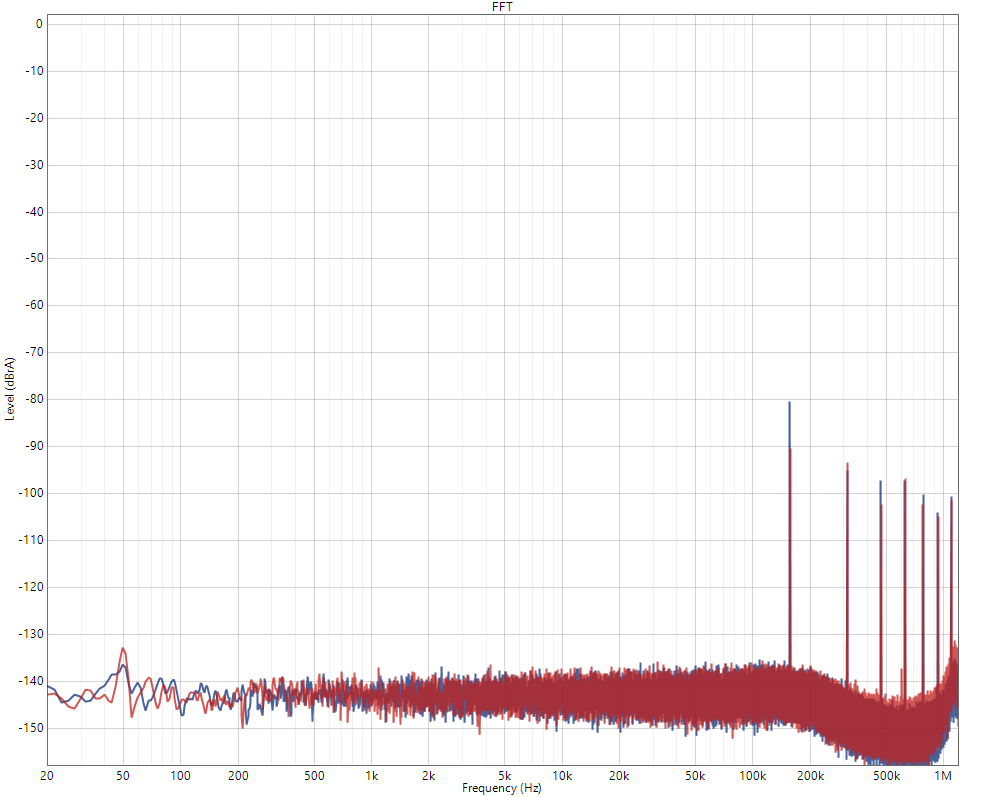
1M FFT, 3 Averages
A little bit of what looks to be switching noise visible at higher frequencies, though very low in level. Inherent noise from the amplifier is otherwise quite low.
IMD
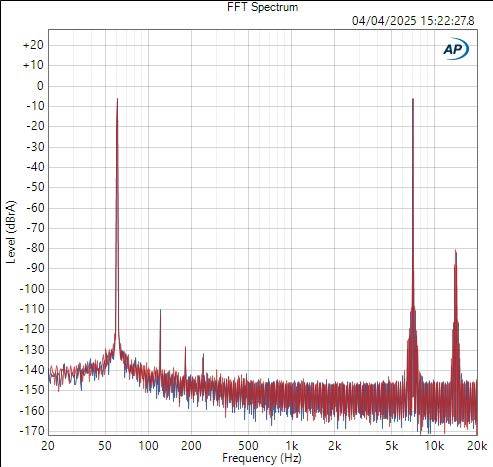
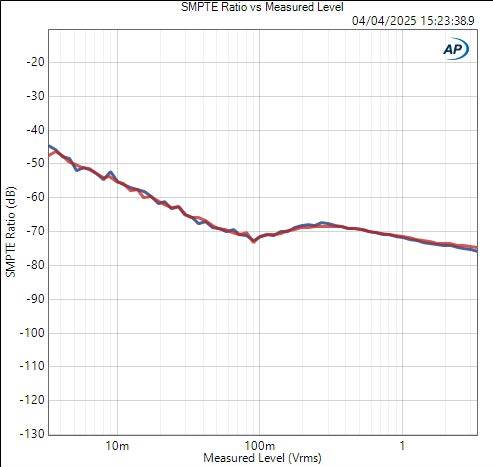
An interesting profile of IMD vs level here. Reasonably low overall.
Dynamic IMD (DIM)
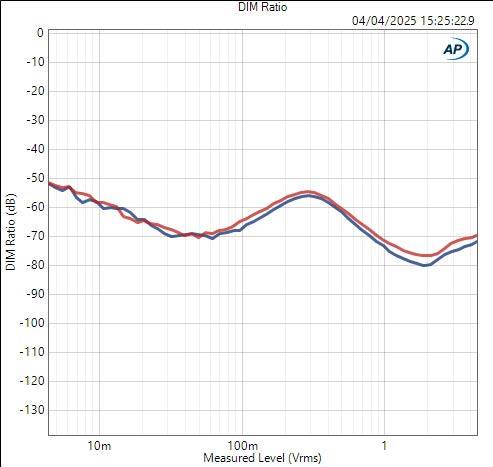
DIM vs level shows a pretty unusual result with a clear ‘hump’ midway through the output. This would imply that the distortion for high frequencies in particular may vary with level in a different manner to distortion for low frequencies.
Crosstalk
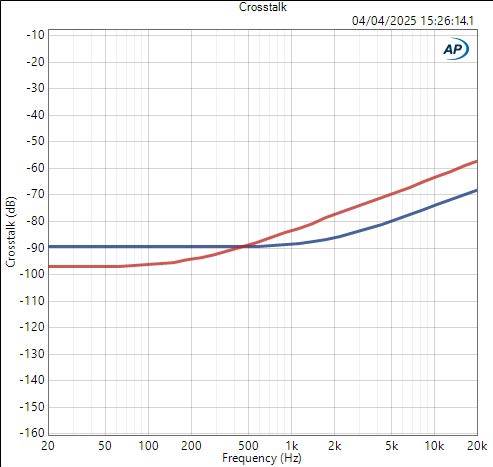
Crosstalk is higher than ideal, though with this much power in this small a form factor that is often somewhat unavoidable.
Multitone
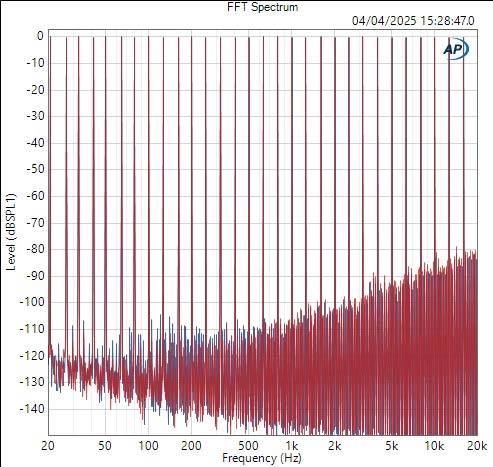
The multitone FFT simply shows us what we saw from the THD vs frequency test. Distortion is lower the lower in frequency you go.
Square Wave Output
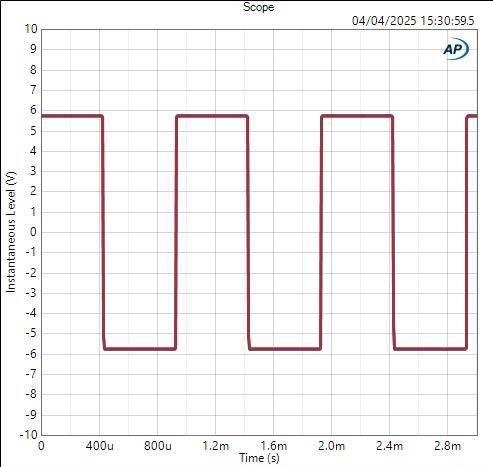
Thanks to the extremely wide bandwidth, square wave output is extremely clean.
Summary
The Alto is by no means the most transparent or neutral device available. But the structure of harmonic distortion it does have, in particular combined with consistent behaviour at high output levels, and very low distortion for bass content, provides a tastefully warm presentation that avoids many of the issues incurred by other warmer sounding amplifiers.

